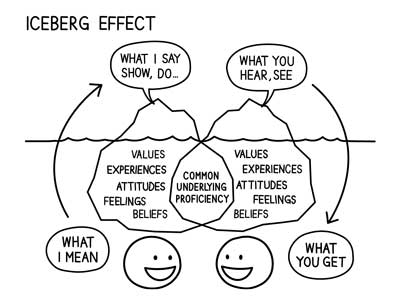|
"Define your terms, you will permit me again to say, or we shall never understand one another." – Voltaire

When you're sitting with an executive, and you ask how they'll know they'll know their desired result is achieved, what comes out of their mouth sounds like a metric. A measure of success. Exactly what you want to hear.
Double check what you write down. An easy way to do this is to say something like, "It sounds like if we design a program that gets you [insert result], within the parameters we've discussed, it will be the exact right solution. Is that right?"
More often than not, something in their next response will change the result/metric slightly. It may sound like, "Yes. That's right. Assuming [new metric]. If you can do that, it will be a good solution."
This new metric tends to be "soft," and harder to measure than the original. For instance, I was just in a meeting where the new, enhanced metric was "partner buy in." He just slipped it in near the end of our 30 minutes together. My notebook was almost closed. Partner buy in? What does that mean?
Like the sign says, if you see something, say something. In a nice way, without sounded panicky. Like, "Yes. Partner buy in. (pause) Tell me a little more about that. Since we're almost out of time it may help if you give me an example of getting partner buy in, and an example of not getting it."
Buyers don't mean to be obtuse, communication is hard. There is a lot of assumed knowledge. Especially around priorities. Partner buy in may not sound like much to my contact because he lives it, but as an outsider I have no context. After talking about it for a few minutes it's clear I will be talking to all the partners about their individual priorities before getting the exact right solution.
Check your assumptions. Tease out priorities. Spend a little more time chatting up front versus spending of a lot of time fixing something later on.
Good stuff.
|